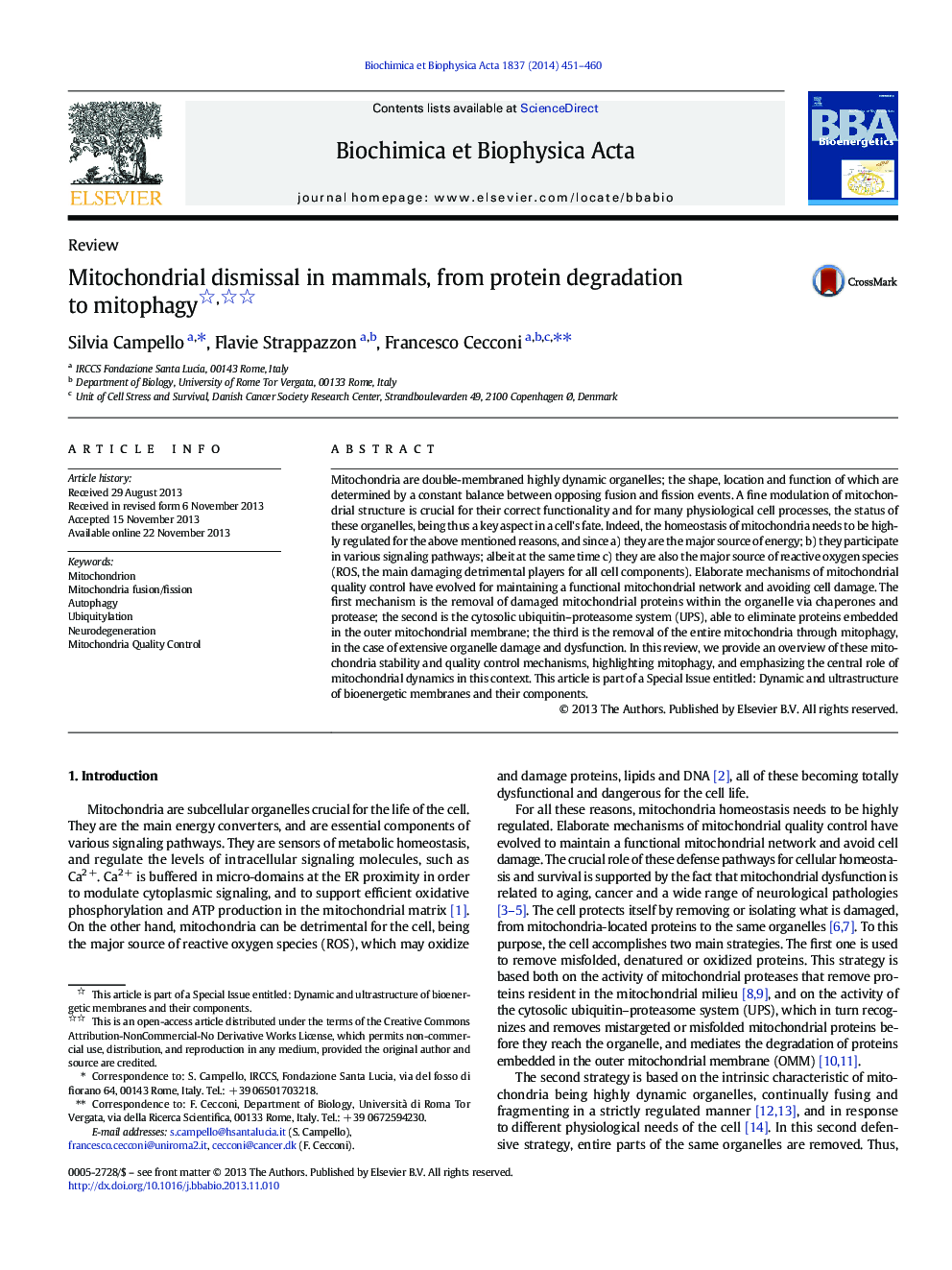| Article ID | Journal | Published Year | Pages | File Type |
|---|---|---|---|---|
| 10795485 | Biochimica et Biophysica Acta (BBA) - Bioenergetics | 2014 | 10 Pages |
Abstract
Mitochondria are double-membraned highly dynamic organelles; the shape, location and function of which are determined by a constant balance between opposing fusion and fission events. A fine modulation of mitochondrial structure is crucial for their correct functionality and for many physiological cell processes, the status of these organelles, being thus a key aspect in a cell's fate. Indeed, the homeostasis of mitochondria needs to be highly regulated for the above mentioned reasons, and since a) they are the major source of energy; b) they participate in various signaling pathways; albeit at the same time c) they are also the major source of reactive oxygen species (ROS, the main damaging detrimental players for all cell components). Elaborate mechanisms of mitochondrial quality control have evolved for maintaining a functional mitochondrial network and avoiding cell damage. The first mechanism is the removal of damaged mitochondrial proteins within the organelle via chaperones and protease; the second is the cytosolic ubiquitin-proteasome system (UPS), able to eliminate proteins embedded in the outer mitochondrial membrane; the third is the removal of the entire mitochondria through mitophagy, in the case of extensive organelle damage and dysfunction. In this review, we provide an overview of these mitochondria stability and quality control mechanisms, highlighting mitophagy, and emphasizing the central role of mitochondrial dynamics in this context. This article is part of a Special Issue entitled: Dynamic and ultrastructure of bioenergetic membranes and their components.
Related Topics
Life Sciences
Agricultural and Biological Sciences
Plant Science
Authors
Silvia Campello, Flavie Strappazzon, Francesco Cecconi,
